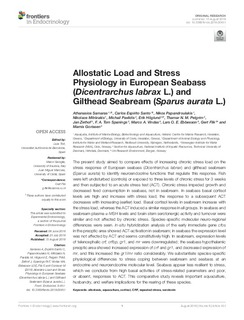| dc.contributor.author | Samaras, Athanasios | |
| dc.contributor.author | Santo, Carlos Espirito | |
| dc.contributor.author | Papandroulakis, Nikos | |
| dc.contributor.author | Mitrizakis, Nikolaos | |
| dc.contributor.author | Pavlidis, Michail | |
| dc.contributor.author | Höglund, Erik | |
| dc.contributor.author | Pelgrim, Thamar N.M. | |
| dc.contributor.author | Zethof, Jan | |
| dc.contributor.author | Spanings, F.A.Tom | |
| dc.contributor.author | Vindas, Marco A | |
| dc.contributor.author | Ebbesson, Lars O.E. | |
| dc.contributor.author | Flik, Gert | |
| dc.contributor.author | Gorissen, Marnix | |
| dc.date.accessioned | 2019-01-04T13:20:24Z | |
| dc.date.available | 2019-01-04T13:20:24Z | |
| dc.date.created | 2018-10-15T17:23:51Z | |
| dc.date.issued | 2018 | |
| dc.identifier.citation | Frontiers in Endocrinology. 2018, 9, 451. | nb_NO |
| dc.identifier.issn | 1664-2392 | |
| dc.identifier.uri | http://hdl.handle.net/11250/2579240 | |
| dc.description.abstract | The present study aimed to compare effects of increasing chronic stress load on the stress response of European seabass (Dicentrarchus labrax) and gilthead seabream (Sparus aurata) to identify neuroendocrine functions that regulate this response. Fish were left undisturbed (controls) or exposed to three levels of chronic stress for 3 weeks and then subjected to an acute stress test (ACT). Chronic stress impeded growth and decreased feed consumption in seabass, not in seabream. In seabass basal cortisol levels are high and increase with stress load; the response to a subsequent ACT decreases with increasing (earlier) load. Basal cortisol levels in seabream increase with the stress load, whereas the ACT induced a similar response in all groups. In seabass and seabream plasma α-MSH levels and brain stem serotonergic activity and turnover were similar and not affected by chronic stress. Species-specific molecular neuro-regional differences were seen. In-situ hybridization analysis of the early immediate gene cfos in the preoptic area showed ACT-activation in seabream; in seabass the expression level was not affected by ACT and seems constitutively high. In seabream, expression levels of telencephalic crf, crfbp, gr1, and mr were downregulated; the seabass hypothalamic preoptic area showed increased expression of crf and gr1, and decreased expression of mr, and this increased the gr1/mr ratio considerably. We substantiate species-specific physiological differences to stress coping between seabream and seabass at an endocrine and neuroendocrine molecular level. Seabass appear less resilient to stress, which we conclude from high basal activities of stress-related parameters and poor, or absent, responses to ACT. This comparative study reveals important aquaculture, husbandry, and welfare implications for the rearing of these species. | nb_NO |
| dc.language.iso | eng | nb_NO |
| dc.publisher | Frontiers Media | nb_NO |
| dc.rights | Navngivelse 4.0 Internasjonal | * |
| dc.rights.uri | http://creativecommons.org/licenses/by/4.0/deed.no | * |
| dc.title | Allostatic Load and Stress Physiology in European Seabass (Dicentrarchus labrax L.) and Gilthead Seabream (Sparus aurata L.) | nb_NO |
| dc.type | Journal article | nb_NO |
| dc.type | Peer reviewed | nb_NO |
| dc.description.version | publishedVersion | nb_NO |
| dc.rights.holder | © 2018 Samaras, Espírito Santo, Papandroulakis, Mitrizakis, Pavlidis, Höglund, Pelgrim, Zethof, Spanings, Vindas, Ebbesson, Flik and Gorissen | nb_NO |
| dc.source.pagenumber | 13 | nb_NO |
| dc.source.volume | 9 | nb_NO |
| dc.source.journal | Frontiers in Endocrinology | nb_NO |
| dc.identifier.doi | 10.3389/fendo.2018.00451 | |
| dc.identifier.cristin | 1620603 | |
| dc.relation.project | EC/FP7/265957 | nb_NO |
| cristin.unitcode | 7464,20,15,0 | |
| cristin.unitname | Akvakultur | |
| cristin.ispublished | true | |
| cristin.fulltext | original | |
| cristin.qualitycode | 1 | |

